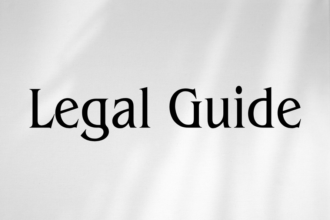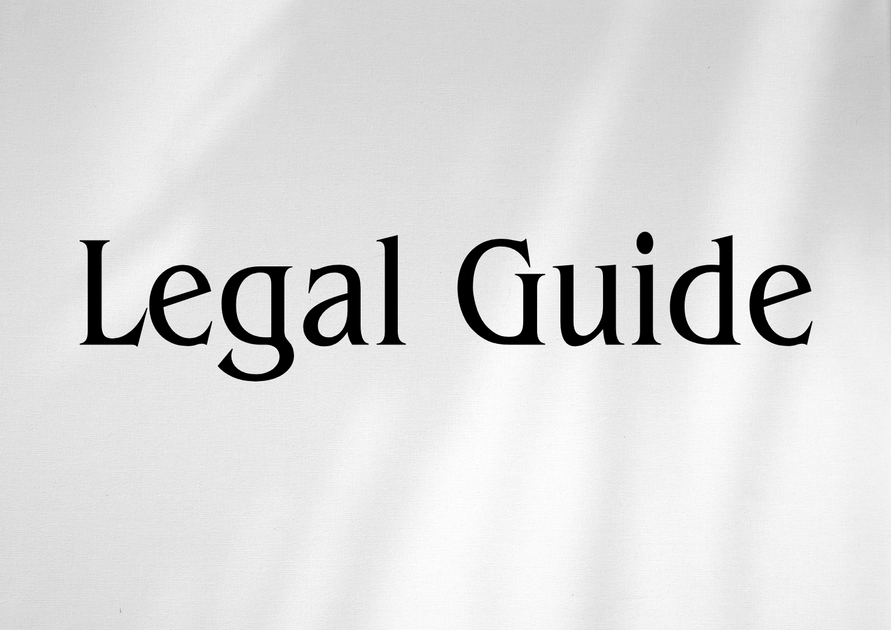Introduction: The Crucial Role of QCAA Safety Audits and Regulatory Inspections in the UAE
Ensuring workplace safety and regulatory compliance has become a cornerstone of operational excellence in the United Arab Emirates, especially amid a rapidly evolving legal landscape. The Qatar Construction and Asset Management Authority (QCAA)—despite its roots in Qatar—has developed frameworks that resonate with parallel regulatory bodies and standards in neighboring jurisdictions, including the UAE, as part of the wider GCC regional harmonization in occupational health and safety (OHS). With the UAE government’s ongoing vision to foster a world-class business environment, the subject of safety audits and regulatory inspections has taken on acute significance, particularly following recent legal reforms and the introduction of new inspection protocols under various federal and ministerial decrees.
This article aims to provide a thorough, consultancy-grade exposition of QCAA-style safety audits and inspections as adapted and practiced under UAE law, dissecting their legal bases, practical applications, risks of non-compliance, and strategic compliance recommendations for organizations. We draw upon the latest relevant federal decrees, guidelines from the Ministry of Human Resources and Emiratisation (MHRE), and government enforcement trends. This expert analysis will equip UAE businesses, compliance managers, legal practitioners, and HR executives with actionable insights required to navigate the regulatory environment in 2025 and beyond.
Given the recent updates in the UAE’s regulatory framework—particularly Federal Law No. 33 of 2021 (UAE Labour Law) and associated Ministerial Resolutions—understanding the implications of safety audits and inspections from a legal compliance viewpoint has never been more essential. Failure to do so can result in significant legal risks, reputational damage, and financial penalties.
Table of Contents
- Overview of the Regulatory Framework for Safety Audits and Inspections in the UAE
- Understanding the QCAA Approach and Its UAE Context
- UAE Legal Provisions and Compliance Requirements
- Inspections Process: Key Steps and Stakeholder Roles
- Comparison of Old and New Compliance Landscape
- Case Studies and Practical Implications
- Risks of Non-Compliance and Enforcement Trends
- Strategic Compliance Recommendations for UAE Businesses
- Conclusion: Future Trends and Best Practices
Overview of the Regulatory Framework for Safety Audits and Inspections in the UAE
Key Federal Laws and Guidelines Governing Occupational Safety
Occupational Health and Safety (OHS) in the UAE is principally governed by the following statutes and executive regulations:
- Federal Law No. 33 of 2021 Concerning the Regulation of Labour Relations (UAE Labour Law)
- Ministerial Resolution No. 657 of 2022 on Health and Safety Requirements
- Cabinet Resolution No. 21 of 2020 on Environmental, Health, and Safety (EHS) in Workplaces
- Guidelines from the UAE Ministry of Human Resources and Emiratisation (MHRE)
These regulatory sources mandate that all employers provide safe working environments, conduct periodic risk assessments, and allow for both internal and external audits and government inspections. Specialized sectors—such as construction, energy, healthcare, and logistics—are also governed by industry-specific decrees, making full compliance a multifaceted challenge.
Alignment with International Best Practices
The UAE’s OHS framework is increasingly aligned with GCC and international standards, such as ISO 45001. Elements of the QCAA model, which emphasizes risk-based inspections and data-driven audits, have been adapted in the UAE through recent regulatory enhancements.
Understanding the QCAA Approach and Its UAE Context
The QCAA Safety Audit Model: Key Features
The QCAA (or equivalent Gulf regional frameworks) employs a structured approach to safety auditing, comprising:
- Documentary Audit: Verification of policies, procedures, and records
- Physical Inspection: On-site observations and workplace evaluations
- Compliance Sampling: Spot checks of safety-critical operations
- Risk Assessment: Analytical review of identified hazards
- Recommendations & Corrective Actions: Issued based on observed deficiencies
Adoption in the UAE Regulatory Environment
The UAE authorities—principally the MHRE—have taken an increasingly proactive stance, with new inspection protocols that mirror the QCAA’s layered, evidence-based auditors’ methodology. This includes advance notice of inspections in some cases, a focus on evidence trails, and prioritization of high-risk industries.
UAE Legal Provisions and Compliance Requirements
Federal Law No. 33 of 2021 and Its Regulatory Scope
Article 13 of Federal Law No. 33 requires employers to take all necessary precautions to protect employees against work injuries and occupational hazards, notably by:
- Implementing safety policies and emergency protocols
- Periodically training employees on workplace hazards
- Maintaining records of workplace accidents and remedial measures
- Ensuring compliance with all ministerial and cabinet-issued guidelines
Failure to comply not only exposes employers to administrative penalties but also criminal liabilities in severe cases (per Federal Decree-Law No. 31 of 2021 on Penal Code).
Ministerial Resolution No. 657 of 2022: New Compliance Thresholds
This Resolution introduces more prescriptive requirements, including:
- Mandatory electronic maintenance of OHS records
- Obligatory internal safety audits at designated intervals
- Enhanced employee consultation and reporting mechanisms
- Mandatory display of safety guidance at worksites
Government Inspection Powers
The MHRE and sector-specific authorities may conduct:
- Unannounced on-site inspections
- Document reviews (electronic and physical files)
- Employee interviews
- Sampling of equipment and facilities
Visual Suggestion
| Requirement | Compliant (Y/N) | Evidence Reference |
|---|---|---|
| Workplace Risk Assessment | ||
| Internal Safety Audit | ||
| OHS Records Maintained Electronically | ||
| Emergency Protocols Communicated | ||
| MHRE Inspection Report Filed |
Inspections Process: Key Steps and Stakeholder Roles
Stages of a Regulatory Inspection in the UAE
- Notification/Unannounced Entry: Inspectors may give prior notice or arrive unannounced, depending on risk profile and previous compliance history.
- Documentation Review: Examination of safety policies, incident logs, employee training records, and compliance certifications.
- On-Site Audit: Physical walkthroughs, machinery/equipment checks, and verification of hazard controls.
- Employee Interaction: Interviews to gauge awareness and real-world practice of safety protocols.
- Audit Report & Remedial Orders: Issuance of a detailed findings report with possible corrective actions or escalation to penalties.
Stakeholders and Their Responsibilities
- Employers: Ultimate responsibility for compliance, documentation, and rectification of deficiencies.
- Designated Safety Officers: Serve as points of contact for inspectors; oversee record-keeping and implementation of corrective actions.
- Employees: Required to cooperate, provide information, and comply with safety directives.
- External Auditors (in some sectors): May perform parallel audits and prepare the business for government inspections.
Comparison of Old and New Compliance Landscape
Legislative Evolution: Key Differences Between Previous and Current Frameworks
| Item | Before Federal Law No. 33/2021 | After Federal Law No. 33/2021 and Ministerial Resolution 657/2022 |
|---|---|---|
| Record-Keeping | Paper-based allowed, limited reporting | Mandatory electronic records, broader scope |
| Internal Audits | Not legally required for all sectors | Obligatory in many sectors, periodic schedule |
| Employee Involvement | Informal consultation | Codified consultation & complaint mechanisms |
| Inspection Powers | Mainly reactive, complaint-driven | Proactive, risk-based, unannounced allowed |
| Penalties | Variable, often warnings | Clearer penalty matrix, steeper fines |
Case Studies and Practical Implications
Case Study 1: Construction Sector Enforcement
Scenario: A Dubai-based construction firm is selected for a routine OHS audit following a reported near-miss accident. Inspectors identify incomplete incident logs, outdated employee training records, and unsafe storage of chemicals.
Legal Analysis: Under Ministerial Resolution 657/2022, these deficiencies constitute multiple breaches. The company receives an administrative fine and an order to implement corrective training and update digital records within 30 days. Criminal referral is avoided due to prompt action but remains a risk in case of non-compliance or repeat violations.
Case Study 2: Hospitality Industry – Proactive Compliance
Scenario: An Abu Dhabi hotel chain institutes quarterly internal audits, maintains digital OHS records, and holds regular employee safety briefings. During a random inspection, inspectors find full compliance, leading to positive feedback and inclusion in a government ‘model employer’ roster.
Practical Insight: Proactive measures not only avert penalties but also enhance brand reputation and may offer an edge in public tenders.
Hypothetical Example: Small Business Risks
A Sharjah-based medical clinic neglects to keep electronic records and fails to report a minor workplace injury. An MHRE inspection uncovers these lapses, resulting in a warning, a small fine, and mandatory compliance training for the clinic’s HR staff.
Risks of Non-Compliance and Enforcement Trends
Legal and Financial Sanctions
- Administrative Fines: Ranging from AED 5,000 to AED 50,000 depending on severity and recurrence, as per MHRE schedules.
- Possible Suspension of Operations: For grave or repeated non-compliance, authorities may temporarily suspend activities.
- Criminal Liability: Where willful negligence leads to significant harm or fatalities, prosecuted under Federal Decree-Law No. 31 of 2021.
- Reputational Damage: Public disclosures, negative press, and exclusion from government tenders.
Visual Suggestion
| Violation | Penalty (Pre-2021) | Penalty (2022-2025) |
|---|---|---|
| No Internal Audit | AED 1,000–3,000 (occasional) | AED 5,000+ per violation, recurring |
| Record-Keeping Breach | Written warning | AED 10,000+, escalates on repeat |
| Ignoring Inspector Orders | Possible business reprimand | Temporary business suspension |
Strategic Compliance Recommendations for UAE Businesses
Embedding a Culture of Proactive Compliance
- Regular Internal Safety Audits: Schedule audits in accordance with sectoral guidelines; immediately document findings.
- Automated Compliance Systems: Invest in platforms for digital record-keeping, audit trail management, and incident tracking.
- Employee Training: Conduct periodic OHS training tailored to role and risk environment; ensure proper documentation.
- Engage Accredited External Auditors: Prior to scheduled government inspections, commission independent audits in high-risk industries.
- Policy Reviews: Align workplace safety policies with the latest MHRE and Cabinet resolutions each quarter.
- Stakeholder Engagement: Foster dialogue with employees, safety committees, and legal consultants to ensure continuous improvement.
Compliance Flow Diagram – Suggested Visual
Flow diagram: Annual Internal Audit → Documentation Review → Employee Training → External Audit (Optional) → Government Inspection → Corrective Actions (if needed). This visualization can aid in stakeholder communication and compliance planning.
Conclusion: Future Trends and Best Practices
With the introduction of more rigorous OHS auditing and inspection processes, the UAE is cementing its commitment to workplace safety as a hallmark of sustainable business operations. The convergence with QCAA and global best practices reflects the nation’s ambition to foster resilient, world-class enterprises equipped to thrive amid heightened regulatory scrutiny.
Looking ahead, organizations operating in the UAE should anticipate further digitalization of compliance processes, greater transparency in inspection outcomes, and increasingly severe penalties for lapses—especially as Federal Law No. 33/2021 and its implementing resolutions become enshrined in daily corporate governance. Businesses that treat compliance as a continuous, organization-wide commitment rather than a periodic obligation will enjoy significant legal, operational, and reputational advantages.
Best Practices Checklist:
- Stay continuously updated with changes issued by MHRE and the Federal Legal Gazette.
- Proactively engage with legal consultants to interpret and apply new OHS mandates.
- Embed audit-ready practices in digital systems and organizational culture.
- Document every step of the compliance process and rectification of past deficiencies.
By taking these steps, UAE businesses will position themselves as leaders in compliance, safety, and corporate responsibility, optimizing for both legal protection and long-term success.




